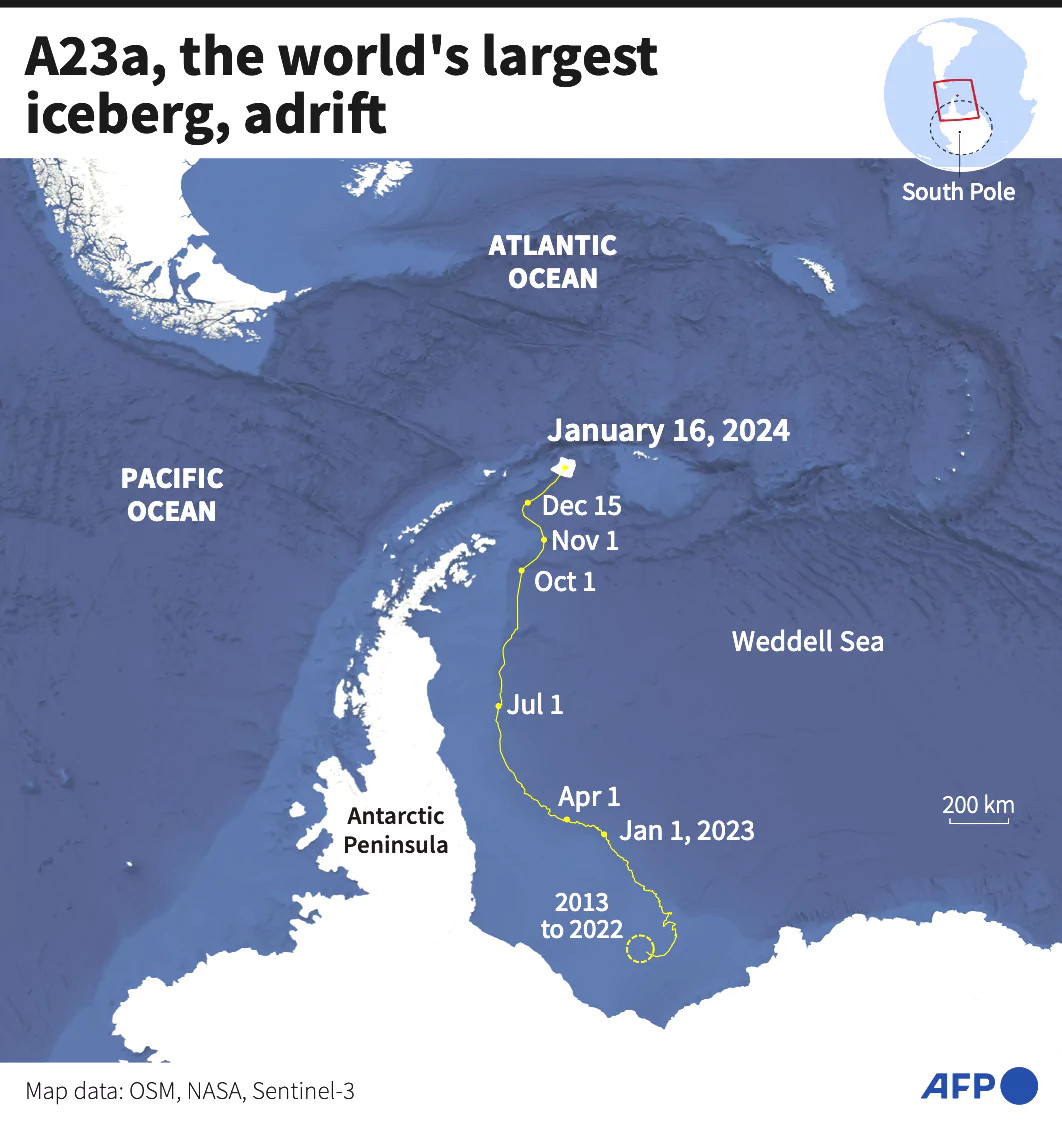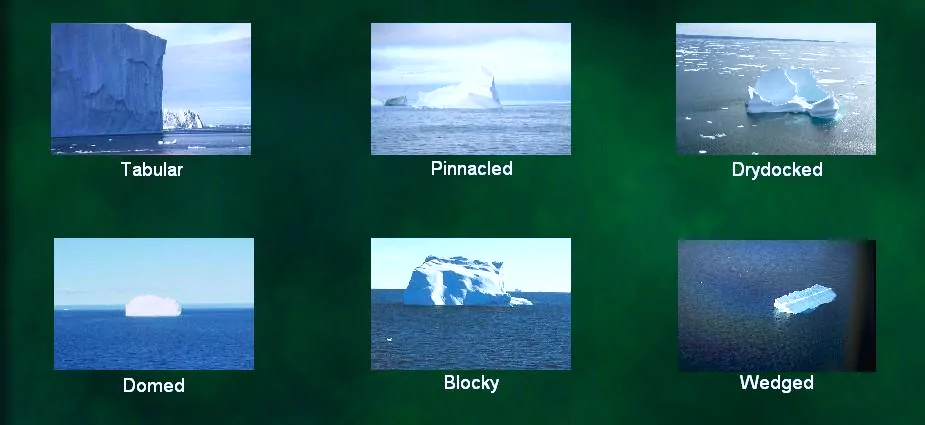Context:
Recently, Expedition leader Ian Strachan guided his ship through the snow and fog in the Antarctic seas to witness the majestic A23a iceberg.
- This iceberg is drifting between Elephant Island and the South Orkney islands.
- The iceberg is on a path known as “iceberg alley”.
A23: The Largest Iceberg in the World
- In 1986, A23a first broke off Antarctica’s Filchner Ice Shelf coast.
- It is the world’s oldest iceberg and largest. A23a is heading out of the Weddell Sea.
- It is in tooth-shape and nearly 4,000 square kilometers (1,550 square miles). In size, it is more than twice the size of Greater London.
- This iceberg comprises around 1 trillion tonnes of freshwater.

About Iceberg
- Definition: An iceberg is formed when the ice breaks away from glaciers or ice shelves and floats freely in open water.
- These icebergs move along with ocean currents and may either become stuck in shallow areas or rest on the ocean floor.
Types of Iceberg
- There are various types of iceberg.

Factors influencing the formation of icebergs
- Temperature: Warmer conditions contribute to increased melting, leading to more iceberg formation.
- Ocean Currents: Icebergs can drift over long distances due to the influence of ocean currents.
- Underwater Topography: The presence of underwater features affects iceberg movement and grounding.
- Wind Patterns: Strong winds can push icebergs in specific directions, influencing their trajectory.
- Sea Ice Conditions: The presence or absence of sea ice affects iceberg mobility.
- Tidal Forces: Tidal variations impact iceberg movement, especially in tidal regions.
- Climate Change: Global warming accelerates glacial melting, contributing to more icebergs.
- Snow Accumulation: Snow buildup on glaciers adds stress, leading to calving.
- Human Activities: Shipping and industrial operations can influence iceberg movement and pose safety concerns.
Impact of Iceberg Movement
-
Impact on Marine Ecosystems
- Nutrient Boost: When icebergs melt, it releases freshwater with nutrients like nitrogen and phosphorus. This helps create more phytoplankton, which is essential for marine food chains.
- Disruption of Ocean Currents: Icebergs can change how ocean currents flow, affecting where nutrients and plankton go. This can disrupt food webs and harm species that rely on specific currents.
- Habitat Creation: Icebergs become homes for various marine life, including algae, krill, penguins, and seals. These icy platforms offer shelter and breeding spaces. In this way, it supports biodiversity in the open ocean.
- Salinity Changes: Melting icebergs dilute seawater, which can affect organisms like coral reefs and certain fish species that are sensitive to changes in saltiness.
-
Impact on Coastal Regions
-
- Sea Level Rise: Melting icebergs contribute to rising sea levels, leading to coastal erosion, increased flooding, and the displacement of coastal communities.
- Grounding Hazards: When large icebergs hit the seafloor near coasts, they can damage underwater structures, disrupt shipping routes, and sometimes cause tsunamis.
- Freshwater Supply: Melting icebergs can be a valuable source of freshwater in certain regions, especially during droughts, providing water for drinking, irrigation, and hydropower.
Also Read: Antarctica Ice Shelves: 40% Volume Loss In 25 Years
News Source: Economic Times
![]() 23 Jan 2024
23 Jan 2024

